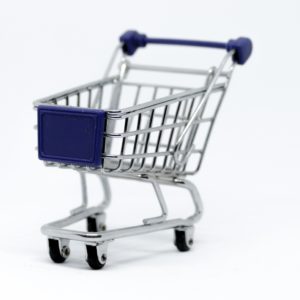Can These Retailers Revive? Yes, Just Add Automation.
The online shopping phenomenon continues to challenge brick-and-mortar retailers to re-think their selling strategy. The convenience of ordering online appeals to consumers.
But, innovation transforms retailers’ brick and mortar presence from a liability to an asset. In fact, it can help to grow brick and mortar presence. It’s actually the failure to innovate that poses a threat.
Formerly known as Children’s Bargain Town, Toys R Us once dominated the children’s toy market. After 70 years in business, $5 billion in debt, the company closed all of its 800 stores in 2018.
This placed 31,000 direct Toys R Us employees out of work.
Toys R Us’ struggles also hit its vendors pockets. Overall, Toys R Us vendors faced at least $350 million in losses. The retailer’s downturn negatively impacted well-known toy maker and vendor, Mattel’s, bottom line.
Once referred to as the seventh wonder of the business world, retailer Sears filed for bankruptcy just over a year ago. It continues to close many of its locations.
Charming Charlie’s, known for its accessories organized in store by color, filed for bankruptcy for the second time last summer. With merely $6,000 cash on hand, the retailer folded. Founded in 2004, the store only operated for 15 years.
Since 2012, JCPenney’s revenues continue to drop. This past fiscal year, revenue was valued at $12 billion, down from $20 billion in 2012.

At under $1 a share, JCPenney stock risks removal from the New York Stock Exchange. In 2019, it closed 21 of its stores. It also retired its furniture and appliance offerings.
Recently, Gymboree Group, which included Gymboree, Gymboree Outlet, Janie & Jack, and Crazy 8, folded. Just before closing, the company owned 2,100 store locations across its four brands.
Consumers value online shopping’s efficiency and convenience. Despite this, brick and mortar stores can capitalize on another consumer preference – experience.
Because of the interactions it invokes, a visit to a store is an experience.
The question is how to foster and cultivate store visits as valuable experiences.
By creating positive, face-to-face business to consumer interactions in the front office, retailers can capitalize on consumers’ propensity for experience.
When it comes to front office interactions, humans value human interactions.
So, to optimize front office interactions, retailers should bolster back office operations. By doing so, mundane tasks that indirectly affect customer service can be strengthened to support more front-facing human interactions.
For example, robotics and automation can help to shift mundane tasks. This lets retail staff focus on customer-facing tasks that add visible value.
In fact, Walmart leverages a robot to scan inventory. Human employees use the data generated by this technology to make more informed decisions.
Retailers also leverage automation to streamline cash handling via Cash Recycling & Reconciliation. This allows such retailers to auto-reconcile from bank drop through deposit. It adds efficiency and reduces error to their cash management.
Levering automation within cash operations empowers retailers to rearrange operational tasks. Valuable human assets no longer need to count cash, reconcile cash debits/credits, or fill tills. Instead they can actively assist customers who might need help finding items or simply offer a friendly in-person customer greeting.
Some struggling retailers are taking the preference for experience to an entirely higher level.
For example, JCPenney is piloting yoga, art, and fashion classes with plans to offer such classes at their stores. And just before Christmas, Toys R Us rolled out several interactive-based stores. The stores are staffed with “play pros” trained to test toys alongside children and parents. Staff also hope to help customers order toys online that are in store stock.
Particularly given the scale of the experiential undertakings, back office automation secures these retailers experience-focused goals. Automating back office activities allow stores’ efforts to shift to the front office where consumers witness service firsthand.
As the retail landscape continues to change in 2020 and beyond, the most competitive retailers will be those with an innovative mindset. The top retailers and those with incredible turnaround stories focus on automating their back office to bolster their front office.

